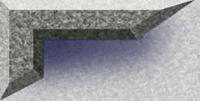|
Moore's Rifles,
or the Second South Carolina Rifles, was formed from the nucleus of companies that were left after the formation of Orr's
Rifles. Units from Pickens County included Companies B, C, D, H and K. In many ways, it was more exclusively a Pickens County
unit than Orr's First. The first commander of the regiment, Colonel J.V. Moore was killed in action at Second Manassas. Other
commanders included Thomas Thomson and R.E. Bowen. Bowen's name is associated with some of her toughest battles. Moore's Second
S.C. Rifles found itself serving in one of three South Carolina brigades in the Army of Northern Virginia that could rival
Gregg-McGowan's Brigade in length of service. The Second Regiment of Rifles was to be found with the glamorous and long remember
Prince of Edisto, Micah Jenkins and his brigade.
Fighting first
in the Peninsula Campaign, the Second would follow the old warhorse, Longstreet, for three bloody years. Fighting in both
the east and the west she would see action at all the major eastern battles, except when detached. Ironically, Jenkins' Brigade
was left in Virginia during Gettysburg. Therefore, they became the only element of Pickett's Division not to make the horrible
charge on the third day of that battle. Longstreet's Crops was also detached during Chancellorsville. However, as if to make
up for those sins of omission, the men were heavily involved in the night gamble at Wauhatchie where Colonel Bowen was wounded.
This was after Longstreet's Crops had moved West to support Bragg. It is one of the bitter ironies of an ironic war that on
at least two occasions, Jenkins and Evander Law from Alabama, former friends from the Citadel, would let their egos cost the
south victories. While I tend to fault Laws and favor Jenkins in these issues, it is a mark against both men. That case is
certainly one for a higher court, but many good man died because of Law's vanity at Wauhatchie. The fighting for Moore's Second
continued on to Knoxville and then back across the mountain. Here Old Pete was once again under the familiar hand and loving
eye of General Lee. Heavily involved in the fighting of the last year of the war, the Second Rifles were close by, at the
death of Jenkins and the wounding of Longstreet in the Wilderness. They would fold their flag with Field's Division at Appomattox,
walk home and the few that were left would embark on the most bitter of journeys the attempt to reconstruction them. They
would tell you they were never reconstructed, only redeemed by Hampton in '76, but that is another story.
The South Carolina 2nd Regiment Rifles was organized during the
spring of 1862 using the 5th South Carolina Battalion Rifles as its nucleus. The unit served in South Carolina, then was ordered
to Virginia and assigned to General Jenkins' and Bratton's Brigade. It participated in the Seven Days' Battles and the conflicts
at Second Manassas , Sharpsburg ,
and Fredericksburg . Later the regiment was with Longstreet at Suffolk and D.H.
Hill in North Carolina. It moved again with Longstreet but did not take part in the Battle of Chickamauga. The unit was involved
in the Knoxville operations, returned to Virginia, and saw action at The Wilderness ,
Spotsylvania , and Cold Harbor .
After enduring the hardships of the Petersburg siege south and north of the
James River, it ended the war at Appomattox . This regiment sustained 149 casualties
at Gaines' Mill and Frayser's Farm, 58 at Second Manassas , 18 at Sharpsburg , and 64 at Wauhatchie . During 1864 from May 4 to June 12, it lost 14 killed, 93 wounded, and 2 missing, and from
June 13 to December 31, there were 16 killed, 90 wounded, and 11 missing. The unit surrendered 22 officers and 274 men.
LINKS
2nd Regimental Rifles South Carolina Volunteers History 1861-1865
Lt. Augustus Dean's Papers
Battle of Sharpsburg, MD
2nd S. C. Rifles Pickens County, SC Dead
|

